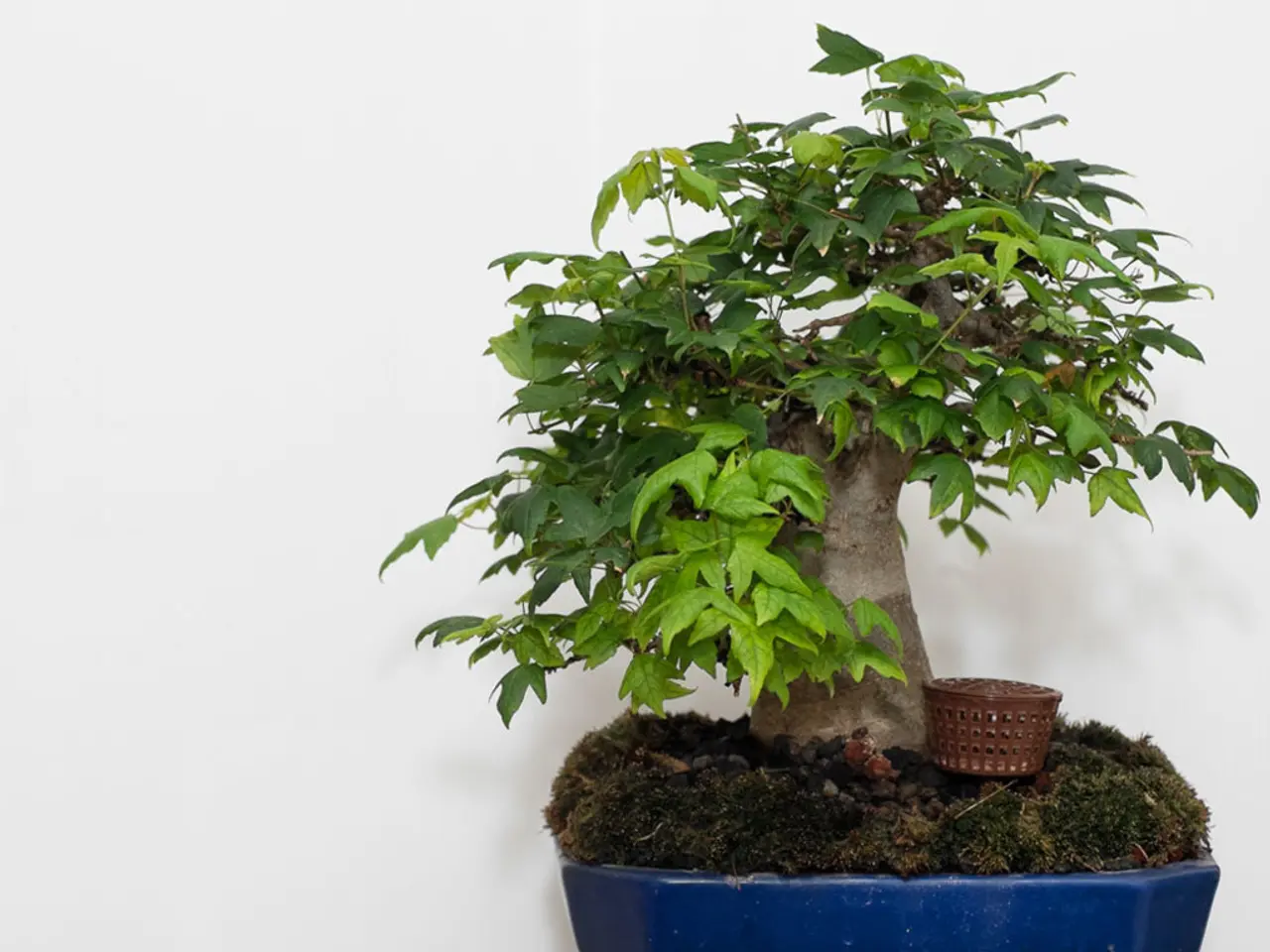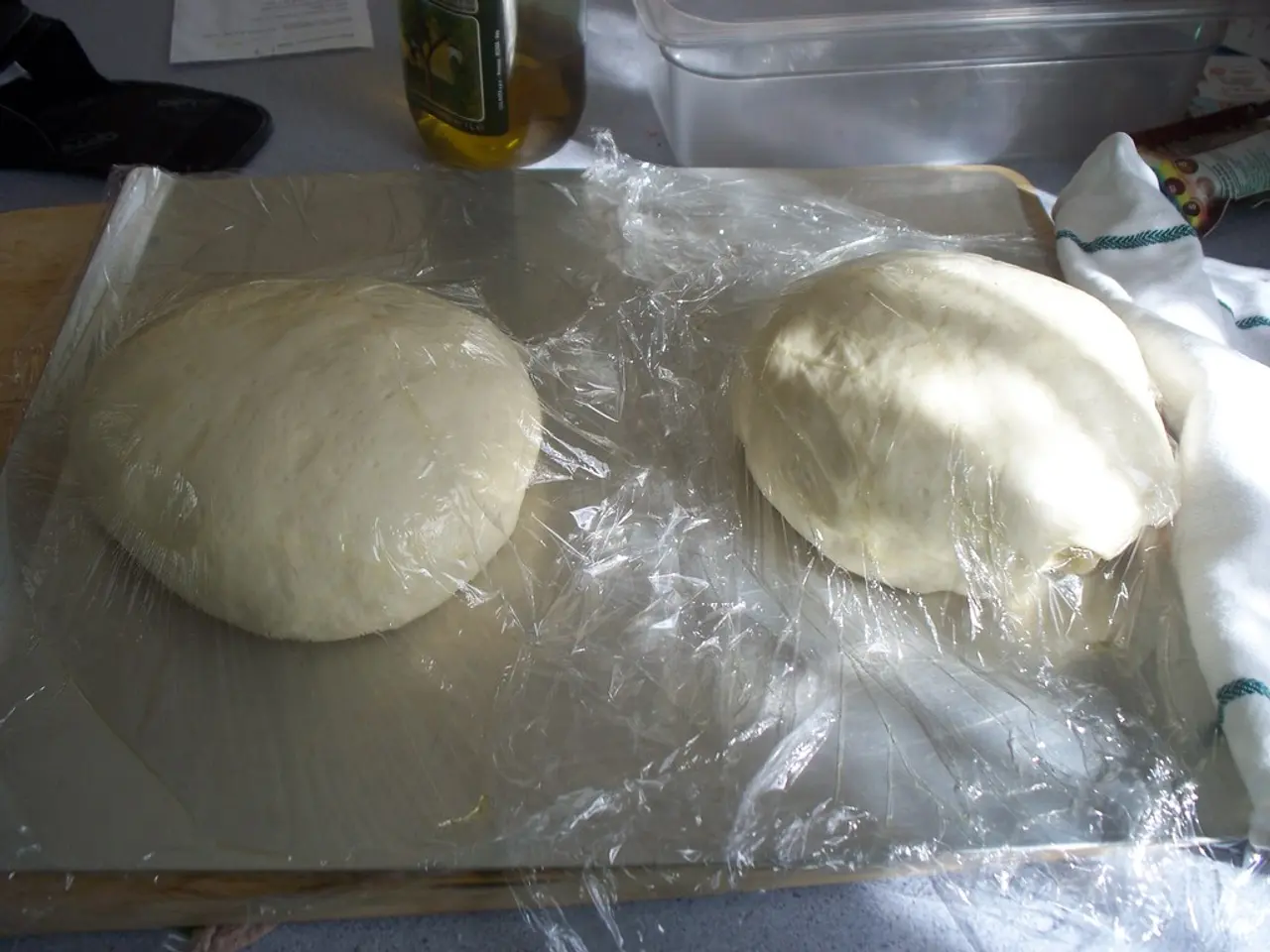The reasoning behind Bonsai being planted in shallow containers.
In the world of bonsai, shallow pots play a crucial role in maintaining the miniature size and health of these intricate trees. The primary reason for this is that shallow pots naturally limit root growth, a key aspect in bonsai cultivation [1][5].
This restriction is intentional and central to the art of bonsai, as controlling root size directly influences the overall size and health of the tree. Shallow pots facilitate regular root pruning, which is essential for maintaining the miniature size of bonsai trees. Pruned roots encourage a compact, healthy root system that supports the tree without allowing it to outgrow its container [2][3].
By limiting root space, the tree diverts more energy into developing branches, leaves, and its overall aesthetic form — the defining miniature look of bonsai [5]. Additionally, bonsai soil mixes used in shallow pots are fast-draining and provide good aeration, preventing root rot despite the limited soil. This ensures the roots remain healthy in a confined space [2][3].
Moreover, shallow pots contribute to the stability and aesthetics of bonsai design. Bonsai often value a wide, radial root spread (nebari) visible at the soil surface for stability and visual appeal. Shallow pots encourage this root formation, which complements the miniature tree's overall balance and proportion [3].
Good drainage is essential for maintaining optimal moisture levels in bonsai trees. Drainage holes in bonsai pots allow excess water to escape, preventing root rot and promoting healthy growth. They should be large enough for water to flow out freely but not so big that soil particles are flushed out [4].
When choosing a pot material for a bonsai tree, consider factors such as aesthetics, practicality, durability, and maintenance requirements. Wooden containers add warmth and rusticity to a bonsai display, and they are traditionally used in bonsai art. Porcelain or glass containers create a stunning contrast against bonsai trees but are fairly fragile. Clay or ceramic pots offer excellent breathability, moisture retention, and age beautifully over time [6].
For those interested in growing and maintaining beautiful bonsai trees, the Bonsai World platform offers resources and products to help you along your journey [7].
References: [1] Bonsai Empire (2020). The Importance of Root Pruning in Bonsai. Retrieved from https://bonsaiempire.com/the-importance-of-root-pruning-in-bonsai/ [2] Bonsai Basics (2021). Bonsai Soil and Potting. Retrieved from https://bonsaibasics.com/bonsai-soil-and-potting/ [3] Bonsai Tonight (2021). The Importance of Shallow Pots. Retrieved from https://bonsaitonight.com/importance-of-shallow-pots/ [4] Bonsai Empire (2020). Drainage Holes in Bonsai Pots: Why They Matter. Retrieved from https://bonsaiempire.com/drainage-holes-in-bonsai-pots-why-they-matter/ [5] Bonsai Tonight (2021). Why Shallow Pots are Beneficial for Bonsai. Retrieved from https://bonsaitonight.com/why-shallow-pots-are-beneficial-for-bonsai/ [6] Bonsai Tonight (2021). Choosing the Right Pot for Your Bonsai. Retrieved from https://bonsaitonight.com/choosing-the-right-pot-for-your-bonsai/ [7] Bonsai World (2021). Welcome to Bonsai World. Retrieved from https://bonsaiworld.co.uk/
Tree species suitable for bonsai cultivation might be those that naturally grow with compact root systems, as they are more likely to thrive in shallow pots, a common choice in home-and-garden settings for bonsai enthusiasts. Adopting a specific lifestyle that involves regular gardening and maintaining the health of miniature tree species in shallow pots can lead to beautiful bonsai trees, providing an aesthetic addition to home-and-garden landscapes.




